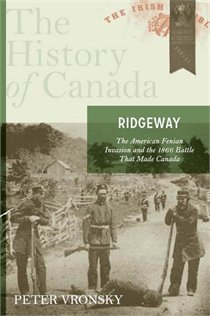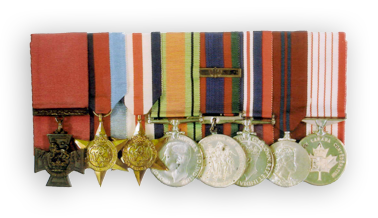Forgotten 1866 British Army casualty identified in Stevensville, Ontario
Peter Vronsky, author of Ridgeway: The American Fenian Invasion and the 1866 Battle That Made Canada, was busy earlier in this month of remembrance when he helped to identify a previously unknown British casualty of the Fenian Raid of 1866, and also had an article published in the Toronto Star on Remembrance Day:
From a November 9th article in the Fort Erie Times (www.forterietimes.ca):
“Forgotten 1866 British Army casualty identified in Stevensville
Historians Rick Doan and Peter Vronsky with Reverend Donald Glennie recently solved the mystery of the unknown military casualty buried in the St. John’s Church graveyard at Snyder in Stevensville. Rick Doan, a local Ridgeway historian and Ryerson University investigative historian Peter Vronsky, the author of Ridgeway: The American Fenian Invasion and the 1866 Battle That Made Canada (Penguin Books) were corresponding on heritage issues in the Fort Erie and Ridgeway region related to the Fenian insurgent invasion in 1866 when their combined efforts suddenly solved the decades-long mystery subject of local lore in Stevensville.
In June 1866 approximately 1,000 Irish American Fenian guerrillas invaded Canada across the Niagara River from Buffalo, NY in an attempt to take Canada hostage in the name of independent Ireland. On June 2, they were met in battle at Ridgeway by two Canadian battalions of militia, 2ndBattalion The Queen’s Own Rifles of Toronto (QOR) and 13th Battalion The Royal Hamilton Light Infantry (RHLI) in what was Canada’s first modern battle, the first fought in the age of telegraph and steam power. The nine QOR volunteers killed at Ridgeway, the ‘Ridgeway Nine’, including three University of Toronto students, are the current Canadian military’s first battlefield deaths. Both the QOR and the RHLI (Rileys) are still active reserve regiments in the Canadian Armed Forces with distinguished combat histories from Ridgeway to Afghanistan.
This made the military grave at Stevensville all the more mysterious since none of the Canadian casualties were interred in the region and the fighting did not reach the Stevensville area. Reverend Glennie who also served as a militia infantryman in the Lincoln and Welland Regiment and later as a Chaplain in the Canadian Armed Forces said, “I have tried unsuccessfully for the past four years (intermittently) to find this soldier’s identity. It is only in the past couple of years that the grave has been marked with a cross. The original wooden marker is long gone. I also bought a wreath through my Legion branch which is laid at the conclusion of our Remembrance Sunday service at St. John’s.”
It was an innocuous e-mail from Peter Vronsky to Rick Doan that triggered the solution. Vronsky says, “While writing my book on the battle of Ridgeway, over a period of five years I literally looked at everything written on the battle not only published material but as well documents hidden away in Canadian, British and American archives, letters, diaries, and also all the local small town press reports of the time. In one local newspaper, the Grand River Sachem (June 20, 1866) I came across a one-sentence story that a British soldier while being deployed to action in the Ridgeway-Fort Erie region died of heat exhaustion on a forced march from Chippawa to Stevensville on the morning of June 2 while the battle was raging at Ridgeway. His unit was supposed to join with the Canadians but never did because the Canadians were ambushed first by the Fenians on Limestone Ridge. This obscure newspaper story stated that the citizens of New Germany (as Snyder was called in 1866) had erected a grave marker for the fallen British soldier buried there. The soldier was identified as Corporal Carrington of the 47th Regiment of Foot from Lancashire, a British regiment stationed in Toronto in the 1860s. If anybody knew where this grave might be located it was going to be Rick Doan. ”
According to Rick Doan, “Dr. Vronsky sent me an e-mail one morning, mentioning that somewhere around Stevensville is a grave yard with possibly a marker for a British soldier who died during the Fenian Raids, the only British serviceman to die in the Fort Erie-Ridgeway region during the raid. Did I ever in my research come across this marker? I had not, but if there was such a thing, I had a pretty good guess as to where it might be located and quickly surveyed the site and contacted Reverend Glennie, who instantly knew what I was talking about. Between the e-mail and my investigation, it took us acting together about five hours to resolve a mystery of the 146-year-old unknown military grave!”
The British authorities have been contacted about the forgotten military casualty and this coming Remembrance Day when the Legion wreath is laid at the lonely cross in the St. John’s Church cemetery, it will be no longer be the “unknown soldier” but identified as Corporal Carrington, British Army, 47th Regiment of Foot Lancashire, fallen on June 2, 1866 in the defence of Canada during the Fenian Raids.
For further information of the Battle of Ridgeway and its casualties, visit www.ridgewaybattle.ca”





Recent Comments